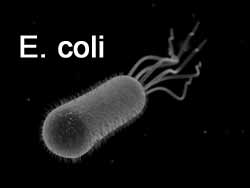In January 1993 I was in 10th grade. I had just discovered the Violent Femmes and punk rock; was worried about figuring out calculus (I eventually did); and spent most of my time being uncool and longing to be cool. Probably pretty similar to every other awkward teenager. I didn’t have a clue that a tragic foodborne illness outbreak was unfolding in the Pacific Northwest and that the event would eventually define a bunch of what I focus on every day.
I had never even heard of Jack-in-the-Box.
The outbreak was linked to four deaths, over to 700 illnesses and almost 200 hospitalizations. E. coli O157:H7 contaminated hamburger was then undercooked and served to thousands from 73 Jack-in-the-Box restaurants. Jack-in-the-Box will forever be linked to this event – and over the past 18 years has become a prominent force in food safety risk reduction.
News of this outbreak hit on President Clinton’s inauguration day and as Doug has written,
Those two events, more than any other, dramatically changed the public discussion of food safety in the U.S. The Jack-in-the-Box outbreak had all the elements of a dramatic story: children were involved; the risk was relatively unknown and unfamiliar; and a sense of outrage developed in response to the inadequacy of the government inspection system. The newly inaugurated President Clinton made microbial food safety a Presidential issue.
And the first focus went to E. coli O157:H7 – the serogroup linked to the Jack-in-the-Box illnesses. Food microbiologists and epidemiologists have seen lots of other equally dangerous shigatoxin-producing serogroups (shigatoxin is what makes E. coli O157:H7, along with its ability to stick to cells so devastating). Here’s a list of the non-O157 STEC outbreaks we’ve been able to find going back to the mid-1990s.
Later this afternoon I will be on my way to Lincoln, NE to meet with a group of academics, researchers, extension folks and regulators to talk about a large 5-year integrated project focused on reducing STECs from farm-to-fork that USDA NIFA has funded. Through the wonders of the Internet, Doug will be Skyping in.
LINCOLN, Neb. — The U.S. Department of Agriculture (USDA) announced today that it has awarded a research grant to the University of Nebraska-Lincoln (UNL) to help reduce the occurrence and public health risks from Shiga toxin-producing E. coli (STEC) along the entire beef production pathway. Dr. Chavonda Jacobs-Young, acting director of USDA’s National Institute of Food and Agriculture (NIFA), is scheduled to award the $25 million grant to the UNL-lead research team today at the university in Lincoln.
"Shiga toxin-producing E. coli are a serious threat to our food supply and public health, causing more than 265,000 infections each year," said Chavonda Jacobs-Young, acting NIFA director. "As non-O157 STEC bacteria have emerged and evolved, so too must our regulatory policies to protect the public health and ensure the safety of our food supply. This research will help us to understand how these pathogens travel throughout the beef production process and how outbreaks occur, enabling us to find ways to prevent illness and improve the safety of our nation’s food supply."
Dr. James Keen at UNL, along with a multi-institutional and multi-disciplinary team of researchers, educators and extension specialists, will use the $25 million grant to improve risk management and assessment of eight strains of STEC in beef. This work will include the O104 strain that caused the recent outbreak in Germany. The project will focus on identifying hazards and assessing exposures that lead to STEC infections in cattle and on developing strategies to detect, characterize and control these pathogens along the beef chain. This knowledge will then be used to find practical and effective STEC risk mitigation strategies. The five main objectives of the project include:
Detection: develop and implement rapid detection technologies for pre-harvest, post-harvest and consumer environments.
Biology: characterize the biological and epidemiological factors that drive outbreaks of STEC in pre-harvest, post-harvest, retail and consumer settings.
Interventions: develop effective and economical interventions to lessen STEC risk from cattle, hides, carcasses, and ground and non-intact beef and compare the feasibility of implementing these interventions for large, small and very small beef producers.
Risk analysis and assessment: develop a risk assessment model for STEC from live cattle to consumption to evaluate mitigation strategies and their expected public health impacts.
Risk management and communication: translate research findings into user-friendly food-safety deliverables for stakeholders, food safety professionals, regulators, educators and consumers.
For more check out the full PR here.
